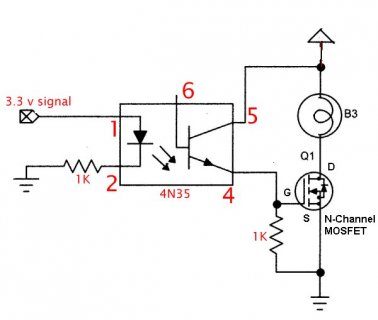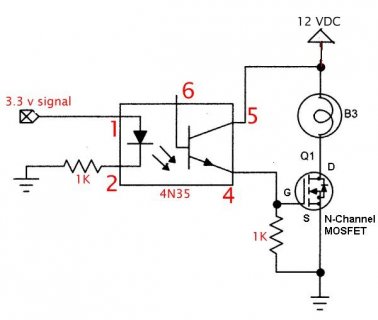KrisKasprzak
Well-known member
all,
I need to turn 18 amps DC @12 V on or off and would like use a MOSFET--basically a simple switch. I've got a few of these and *think* they will work, but digitalWrite() only outputs 3.3 volts but is above the Vgs threshold.
Also, i was going to mount the on the copper side of my PCB and use 4 or so square inches to cool them--not really sure how to compute heat sink requirements--and surely don't trust my calculation. I'm a former mechanical engineer and I'm out of my area.
A link to the mosfet datasheet.
https://www.infineon.com/dgdl/IPP055N03L_rev1.04.pdf?fileId=db3a30432313ff5e01239ec9d89070ad
Thanks in advance.
Kris
I need to turn 18 amps DC @12 V on or off and would like use a MOSFET--basically a simple switch. I've got a few of these and *think* they will work, but digitalWrite() only outputs 3.3 volts but is above the Vgs threshold.
Also, i was going to mount the on the copper side of my PCB and use 4 or so square inches to cool them--not really sure how to compute heat sink requirements--and surely don't trust my calculation. I'm a former mechanical engineer and I'm out of my area.
A link to the mosfet datasheet.
https://www.infineon.com/dgdl/IPP055N03L_rev1.04.pdf?fileId=db3a30432313ff5e01239ec9d89070ad
Thanks in advance.
Kris





